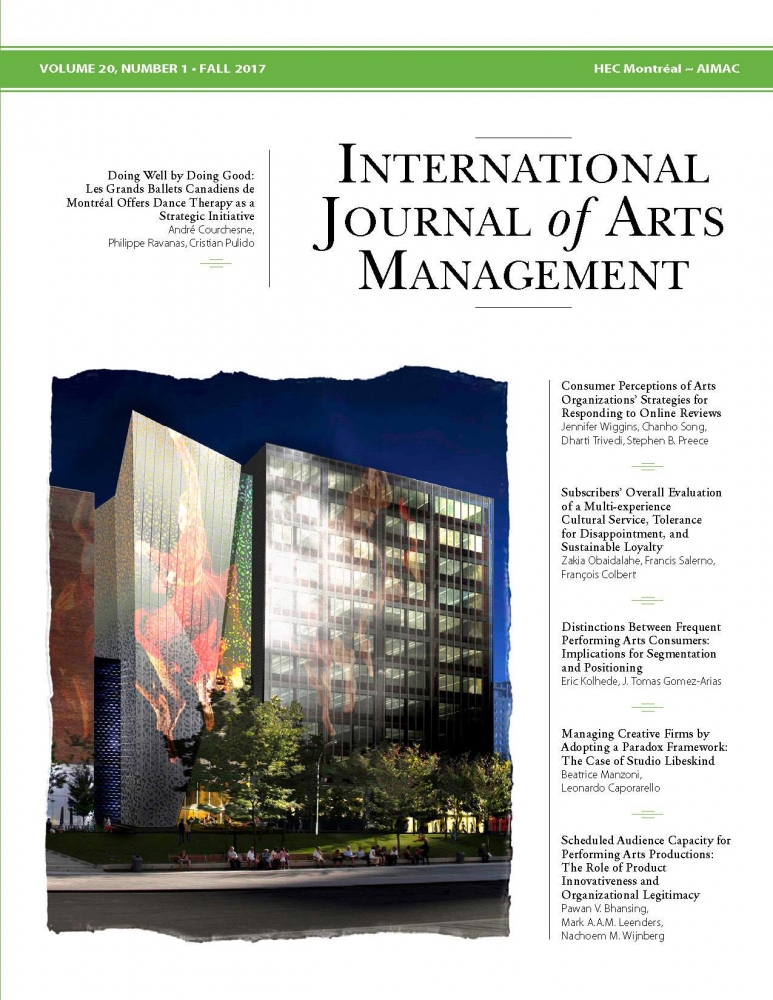IJAM Volume 20 Number 1 (PDF)
Product: Journal
$53.00 CA
FROM THE EDITOR
The fall 2017 issue of the Journal covers a wide variety of themes: from marketing research to mass communication, from strategic marketing to marketing management in arts and culture. This first issue of our 20th year of publication illustrates the breadth and depth of research in our domain.
The first article, by Jennifer Wiggins, Chanho Song, Dharti Trivedi and Stephen B. Preece, brings a new perspective on how arts organizations should respond to mixed or negative critical reviews on their Web site. After analyzing four different strategic responses across two experiments, the authors conclude that providing unedited access to critique might be the most efficient in terms of generating positive consumer attitudes.
In the second contribution, Zakia Obaidalahe, Francis Salerno and François Colbert propose a theoretical framework and a qualitative analysis to explain the loyalty behaviour of arts subscribers, even those who might experience disappointment during their subscription. This analysis reveals that peripheral services and social interaction may be compensating factors that foster tolerance and loyalty in subscribers.
Our third article, by Eric Kolhede and J. Tomas Gomez-Arias, provides additional insights regarding frequent arts consumers through a quantitative analysis conducted in California among chamber music and theatre attendees. This study identifies three distinct segments: a congenial group influenced by the social benefits of attending performing arts events, a convenience group motivated by distribution factors, and a segment of intrinsic consumers influenced by personal benefits derived from the artistic product.
The next article, contributed by Beatrice Manzoni and Leonardo Caporarello, explores the managerial approach behind the artistic and financial success of Studio Libeskind, one of today’s most internationally recognized architectural firms. By framing the usual challenges faced by such firms as paradoxes, the authors propose a set of management approaches for accepting and resolving them.
Our fifth article, by Pawan V. Bhansing, Mark A.A.M. Leenders and Nachoem M. Wijnberg, provides a quantitative analysis of the relationship between product innovativeness and attendance, based on 551 performing arts productions in the Netherlands. The results show that this relationship is positive for companies that are perceived as less legitimate and negative for those that are perceived as more legitimate.
Finally, the Company Profile, contributed by Philippe Ravanas, Cristian Pulido and André Courchesne, offers a different take on the traditional “stick to your core business” strategy by examining how an arts organization can transform people’s lives, not only through artistic excellence and creativity, but also by delivering social benefits such as health and wellbeing. The authors describe how a Montreal ballet company introduced new services and increased its earned and contributed income by doing social good.
André Courchesne
Editor
